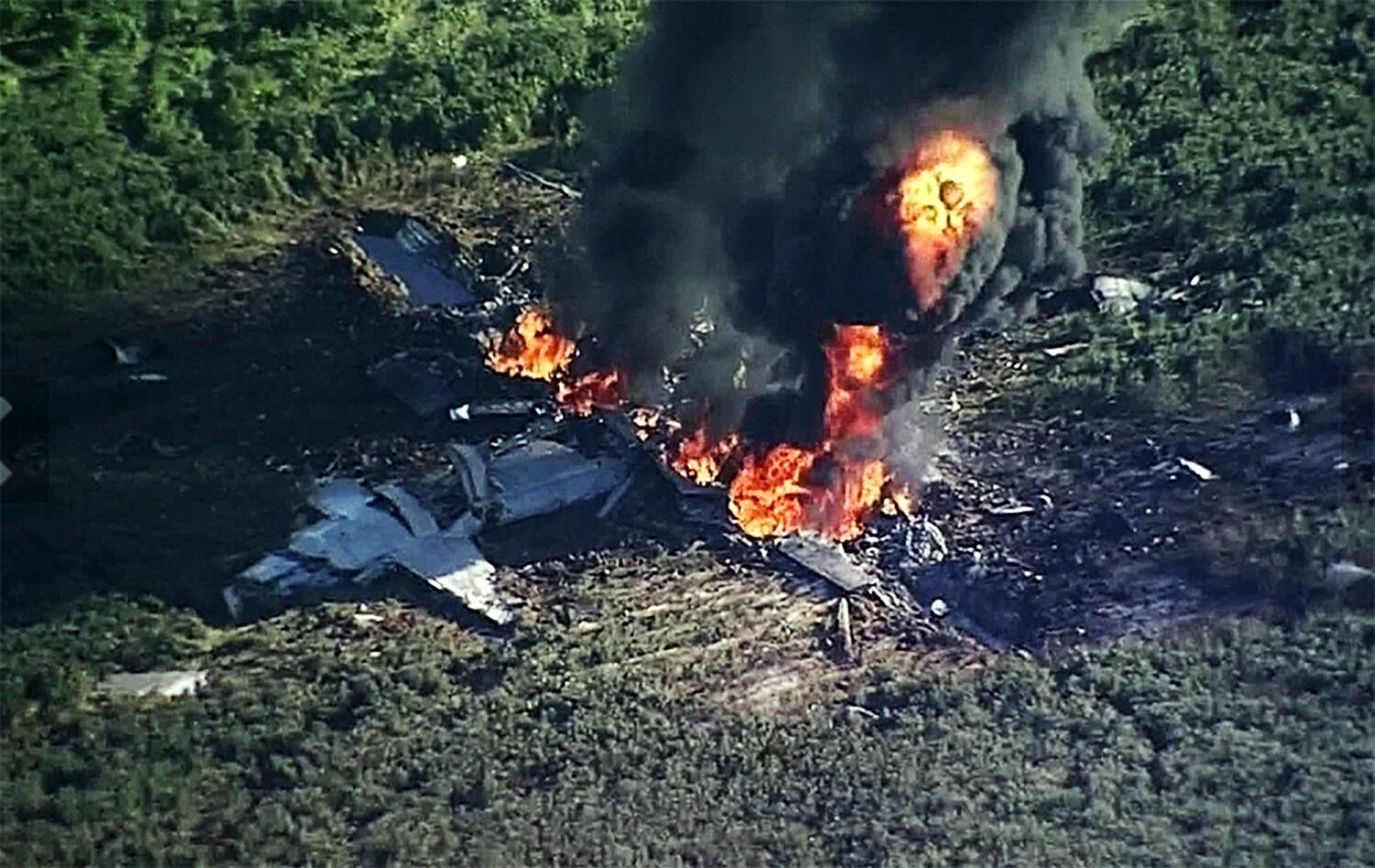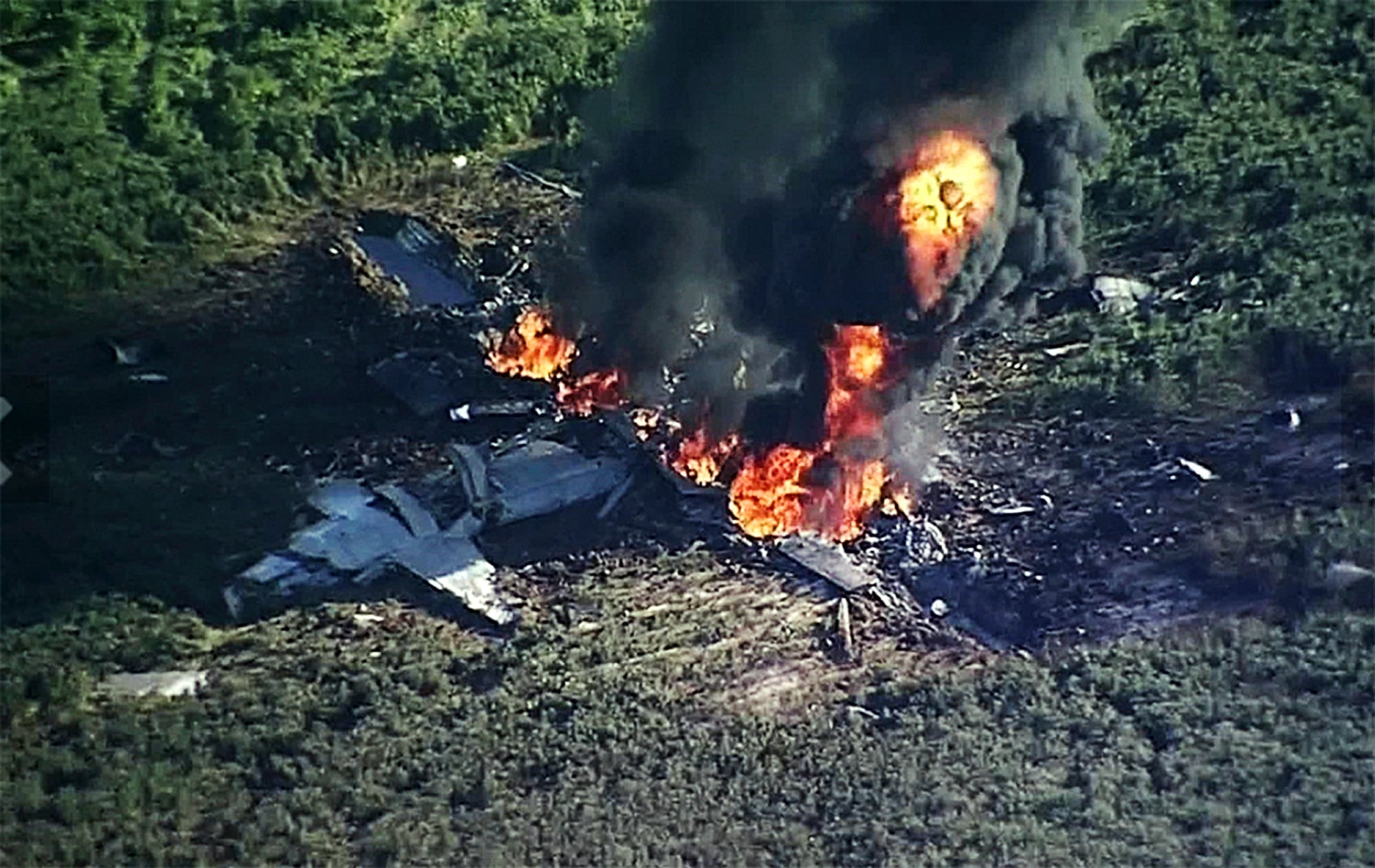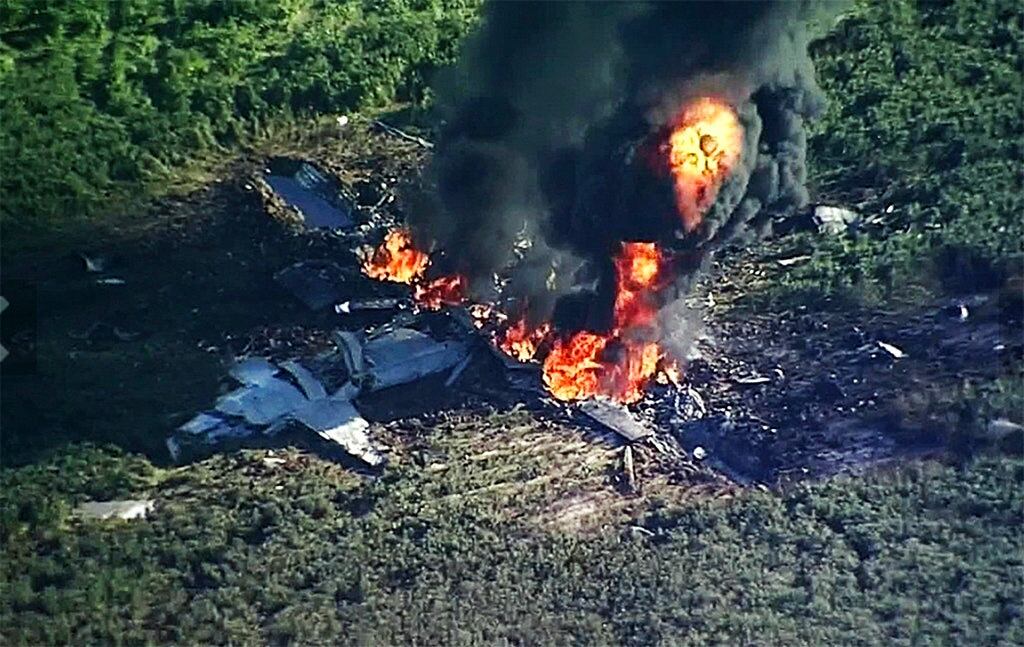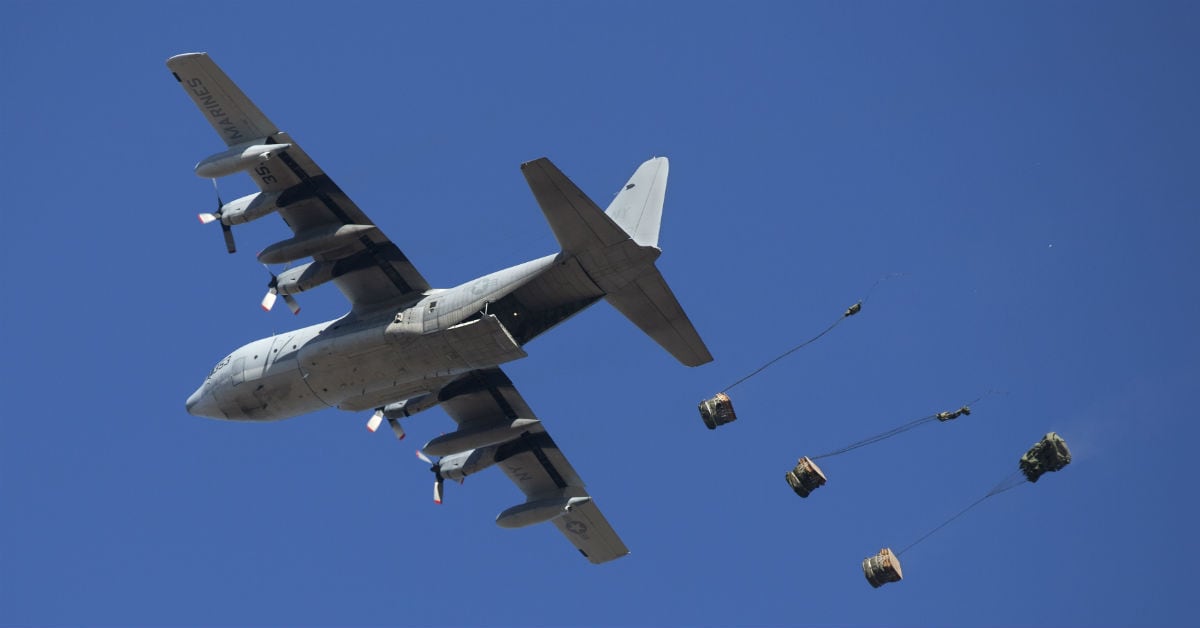Nearly a year after the fiery crash of a Marine Corps Forces Reserve KC-130T killed 15 Marines and a Navy corpsman, most of the Navy’s C-130 fleet remains grounded due to lack of new propellers, impacting one of the service’s sole capabilities for transporting people and gear, according to U.S. lawmakers and service officials.
A propeller problem was identified during inspections of the fleet that occurred after the July 10 crash in Mississippi, when most Navy and Marine Corps C-130Ts and KC-130Ts stopped flying.
Only 10 of the 43 C-130s in the fleet are currently available for operations, according to Greg Kuntz, a spokesman for Naval Air Systems Command, or NAVAIR.
As those aircraft sat grounded and Naval Reserve’s lift capability diminished as a result, the sea service initially opted to place new propeller funding on an unfunded priorities list.
That was rectified in March, when the propellers were funded via a $1.3 trillion omnibus spending bill passed by Congress.
Marine Corps spokeswoman Capt. Sarah Burns said the 12 remaining Marine Reserve KC-130Ts are no longer grounded, and that the squadron conducted its first flight in October, a few months after the crash.
“Some of them are flying,” Kuntz said. “We are bringing them back online as they are needed operationally.”
Kuntz declined to say why some C-130 variants can fly today while others are still grounded.
RELATED

Following last summer’s crash, which pancaked the aircraft upside down and left it broken in two, scattering debris for miles, Kuntz said most Navy and Marine Corps C-130Ts and KC-130Ts stopped flying immediately.
NAVAIR issued a grounding bulletin on Sept. 1, 2017, “as a precaution based on the preliminary engineering investigation,” he said.
During inspections after the grounding, a propeller issue “was one of the things identified,” Kuntz said.
“It is not tied directly to that incident,” Kuntz said. “It was identified during the inspection that these needed to be replaced.”
The new propellers had been considered before the July crash, he said, and are “now the most expedient option to return the C-130T aircraft to the fleet.”
“It’s not uncommon after an incident to do a program-wide look at the aircraft,” Kuntz said. “If you were to identify something, such as the propellers, you would focus on what the solution was.”
Marine Corps officials declined to comment on the cause of last summer’s crash, citing the ongoing nature of the investigation.
Fourth Marine Aircraft Wing commander Brig. Gen. Bradley James said after the crash that the mishap began while the plane was at cruising altitude.
The Associated Press reported in August that some witnesses described the plane descending in a “flat spin,” where the plane twirls around like a boomerang.
The wire service quoted a local named Andy Jones, who said he saw the plane corkscrewing downward with an engine smoking.
“You looked up and you saw the plane twirling around,” he was quoted as saying. “It was spinning down.”

Marine Aerial Refueler Transport Squadron 452 flew the legacy KC-130T on the day of the crash, an aircraft that is being phased out for the new KC-130J variant.
“The current fleet of C-130s has a long history of safe operations supporting Navy and Marine objectives with the current propellers,” Kuntz said.
As the C-130s sat grounded, the new propeller project was initially placed on the Navy’s unfunded priorities list, Kuntz said.
That list lays out programs the Navy wishes to see bankrolled if more money was available from Congress.
But the initiative was recently moved to the Fiscal 2018 budget and is now funded via the massive $1.3 trillion omnibus spending bill passed by Congress in March.
Why the Navy did not initially prioritize funding the new propellers to get the C-130 fleet flying again remains unclear.
Kuntz said “probably multiple reasons” factored into the new props not being a funding priority for the Navy.
“It was really obvious when the funding became available, and we got the omnibus, that they were included,” he said. “We worked very hard to make that happen.”
South Carolina Congressman Joe Wilson, the House Armed Services Readiness Subcommittee chair, questioned the head of Navy Reserve, Vice Adm. Luke McCollum in March about how the lack of propeller money and C-130 grounding was affecting Navy readiness.
Navy Reserve “provides 100 percent of the inter-theater lift for the Navy,” McCollum told the subcommittee.
“Said another way, boxes, people, crews, parts, have to be sourced and delivered around the globe,” he said. “The capability that resides in a Navy Reserve that delivers this is in the C-40 Alpha and C-130 Tango.”
The grounding of the C-130Ts had led to a 42 percent loss of that capability, McCollum said, adding that it was “highly important” that the C-130T propellers get upgraded.
“The demand signal for Navy Reserve in this capacity is very high,” he said.
The new propellers cost $2.7 million per kit and take a month to install. The Navy intends to replace propellers for all 43 aircraft in fleet, Kuntz said.
RELATED

“The Navy has an aggressive schedule that could have the first aircraft with these new propellers returned to service in the fall and have the entire fleet back to service by Spring 2019,” Kuntz said.
The new propellers will offer increased thrust at the same engine torque, he said.
Navy and Marine Corps C-130T fleet age varies from 21 to 34 years, Kuntz said.
“Propellers, like other parts of the aircraft, are routinely inspected and replaced (in accordance with) maintenance procedures when required,” he said.
Geoff is the managing editor of Military Times, but he still loves writing stories. He covered Iraq and Afghanistan extensively and was a reporter at the Chicago Tribune. He welcomes any and all kinds of tips at geoffz@militarytimes.com.





